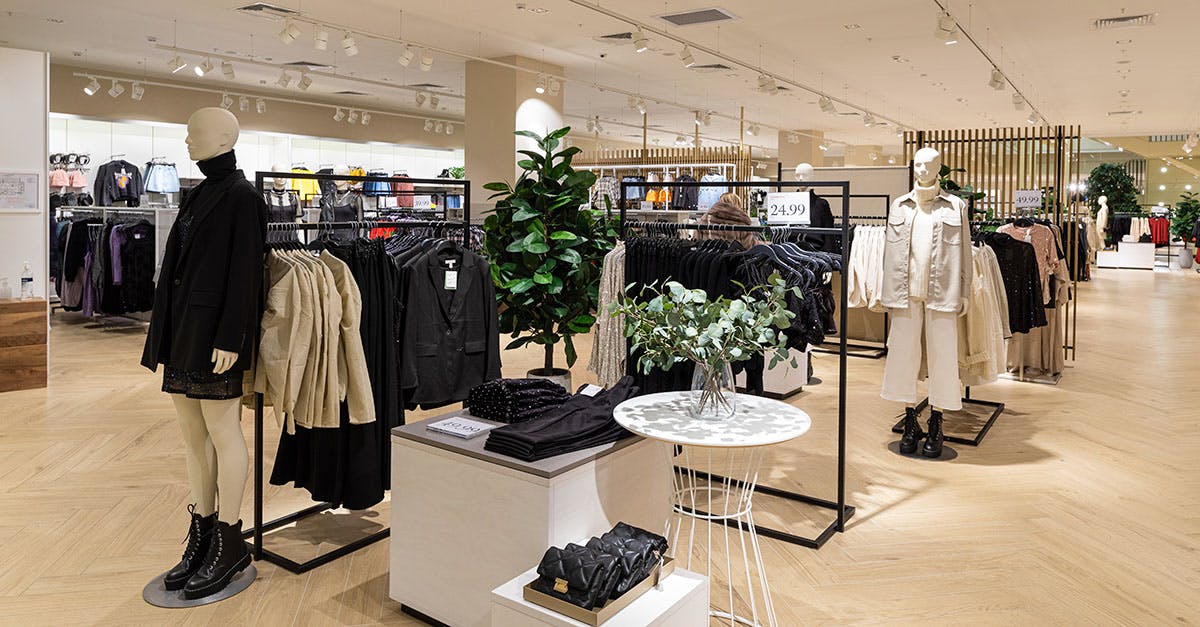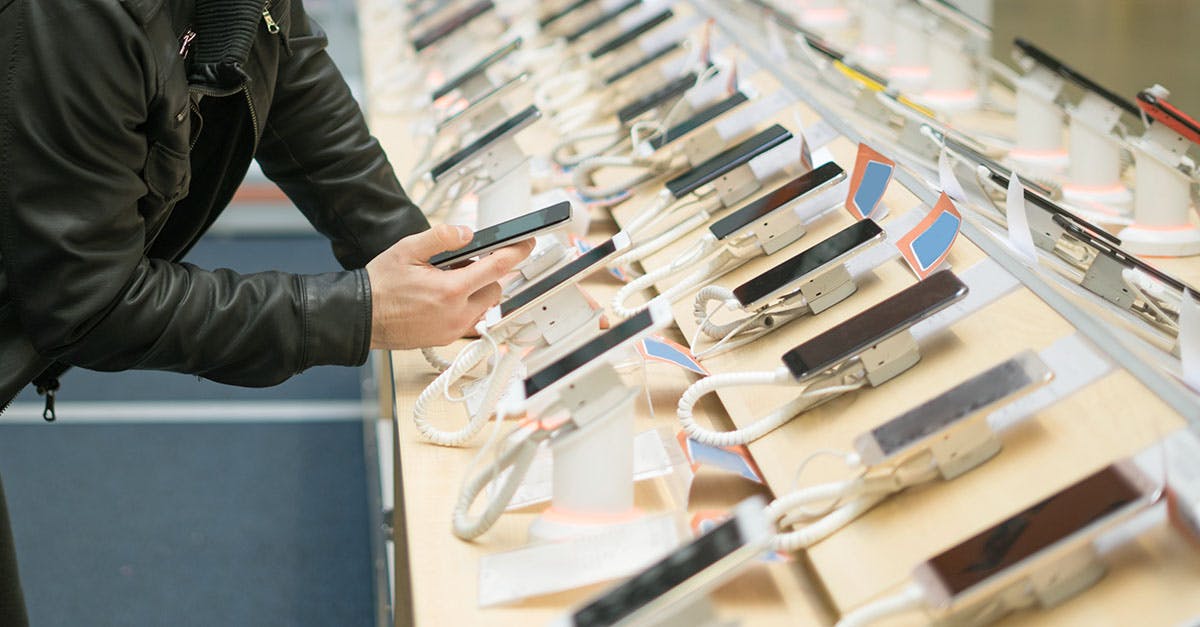Retail theft is reaching crisis levels. You’ve probably read stories and seen viral videos of thieves sweeping supermarket shelves or smashing the windows of luxury clothing stores. Although the retail industry was always vulnerable to shoplifting, recent attacks are larger, more violent, and highly organized. Already reeling from the pandemic, retailers are losing the war.

Just how bad is the problem? In San Francisco’s Central district alone, retail theft is up 88% from 2020. Rising inflation and lenient laws will only make the crisis worse. Retailers need advanced retail security solutions to combat the spike in crime caused by the pandemic. In this post, we’ll discuss why organized retail crime is rising and offer solutions to help you reduce inventory loss.
What is Organized Retail Crime?
The current wave of retail robberies goes beyond opportunistic or need-based theft. These are organized shoplifting rings that operate in an illegal commercial enterprise. Organized retail crime (ORC) involves groups of professional thieves who steal substantial quantities of consumer goods to resell for profit. They can rob thousands of dollars worth of inventory in a single hit.
Organized retail theft rings are looking for a quick way to make money. As a result, they usually nab high-demand or high-value items like electronics and designer goods. Although ORCs are considered to be external losses by retailers, many incidents involve employee collusion. Some employees can disable alarm systems or unlock retail access controls to facilitate the robbery.3. Combined Multi-factor Methods
Why is Retail Theft Soaring?
Petty shoplifting has plagued retail businesses for decades. But the wave of flash mob robberies and violent smash-and-grabs we’re witnessing today is a new phenomenon. The current shoplifting bonanza has been years in the making. From recent law changes to the democratization of retail, many factors have contributed to the current crisis regarding retail security
Relaxed Penalties
Some retailers and law enforcement officials blame the surge in retail robberies on changes in shoplifting laws and decreased penalties for theft. To reduce their incarceration rate and relieve overcrowded prisons, more than half of US states have increased the felony-theft threshold to at least $1,000. With punishment for retail theft eased, more people are encouraged to steal.
Pandemic Disruptions
The pandemic’s economic toll continues to hit many Americans. According to the Pew Research Center, roughly 9.6 million Americans lost their jobs during the COVID-19 downturn. As more businesses moved online or embraced automation, most of these jobs are not coming back. Many people are turning to organized theft rings to make ends meet.
Labor Shortages
Low pay, unreliable hours, and a lack of career progression are leading to a major labor shortage in the retail industry. With fewer employees to guard your merchandise and secure your retail access controls, people will find more opportunities to steal. Understaffing makes retail theft easier as it reduces the risk of getting caught.
Mask Mandates

The pandemic’s mask mandates have become a security threat for most organizations. While they reduce the risk of contagion, they also conceal an individual’s identity. Face masks make it difficult for surveillance systems to identify criminals, weakening retail security. This has emboldened many people to commit illegal acts because they think they won’t get caught.
Online Marketplaces
Up until a few years ago, having a brick-and-mortar store was necessary to sell products. But thanks to online marketplaces, anyone can now become a merchant. Online marketplaces like Amazon, Etsy, and eBay make it easier for thieves to resell stolen goods. These sites enable organized retail gangs to establish ecommerce businesses with their robbed inventory.
The Cost of Retail Theft
Merchandise theft is crippling an industry that is already fighting bankruptcies and store closures. According to the National Retail Foundation (NRF), shoplifting, organized retail crime, and employee theft is costing the industry almost $62 billion a year. In places like California, shoplifting now accounts for 2% to 3% of a retailer’s total sales.
Retail theft doesn’t just affect a retailer’s bottom line but also hits communities and consumers’ wallets. The loss of local and state government revenue from sales taxes will lead to reduced spending on education, healthcare, and infrastructure. Retailers also pass on some of their losses to consumers through price increases, leaving less money in people’s pockets.
How to Reduce Inventory Shrinkage

Fighting merchandise theft is crucial for saving the struggling retail industry. Although you can’t completely prevent retail theft, there are steps you can take to minimize shoplifting incidents. Standard retail security systems are no longer effective to combat this new crime wave. You need innovative retail access control and anti-theft technologies to protect your merchandise.
Follow the tips below to decrease inventory shrink and increase your profits in a post-pandemic world:
Lock Up High-Value Products
While it’s not advisable to keep all your items off-limits, you should lock up high-value products to cut your losses. Find creative ways to secure expensive items while still providing a good customer experience. One way to do this is to add QR codes to products behind lock-and-key. This allows customers to scan the code and make a payment before collecting the item.
Upgrade Your Access Controls
Retail theft doesn't always result from shoplifting. Employee theft accounts for 33% of inventory shrinkage. Traditional retail access controls like PIN codes or key cards can be used to record entrance to stock rooms where employees might try to steal. Invest in a facial biometric system like the Alcatraz Rock to make sure that only approved employees can access your storeroom, and that there will be a record of their entry.
Adopt Point-of-Sale Activation

If you sell electronic goods, point-of-sale activation (PoSA) is vital for your retail security. PoSA works by locking intelligent devices at the point of production, then unlocking the device at the point-of-sale via a code or Bluetooth technology. This renders a product useless until it has been paid for. Home Depot is currently leveraging this technology to secure its power tools.
Add GPS Tracking
If a retail theft ring robs your store, you can use GPS tracking to recover your merchandise. GPS trackers use cellular networks to report location in real-time. Adding undetectable GPS trackers to products helps you track the items as they travel from the shoplifter to fencing operations. These devices allow you to catch the criminals and reclaim your goods.
Secure Your Merchandise With Alcatraz AI
The retail landscape has changed forever. Economic distress and permissive laws will exacerbate the retail theft crisis. Restricting product access is the most important security measure to take to keep your merchandise safe.
← Previous -- Next →
Tag(s):
Blog
Other posts you might be interested in
View All Posts
Blog
5 min read
| September 19, 2023
Improving Access Control in Retail Security Systems | Alcatraz AI
Read More
Blog
8 min read
| February 6, 2022
Dark Store Security: 10 Reasons to Invest in Security
Read More
Blog
5 min read
| April 13, 2022
How Stadiums and Arenas Are Reducing Check Process Time with AI Security Systems
Read MoreSubscribe to email updates
Additional content around the benefits of subscribing to this blog feed.


